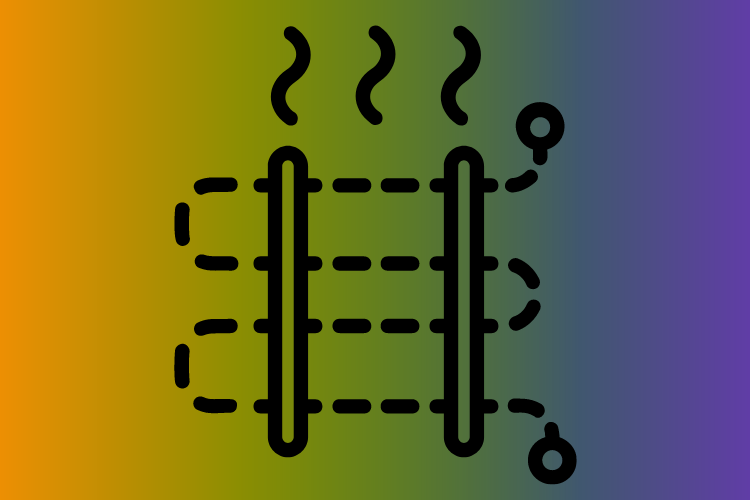f you're looking to fit a new radiator to your central heating loop then you'll be pleased to know that for a good DIY plumbing enthusiast your radiator should be fitted in a day.
Fitting a radiator is certainly not beyond the skills of a good DIY enthusiast but you should ensure that you carry out the steps required to fit a radiator properly to get the result you want.
And of course, always remember that the tips given here by Top Tradespeople are for guidance only.
If you come unstuck you should seek the help of a professional radiator fitter (plumber), if needed.
Where To Fit A Radiator?
First things first.
Number one task is to decide where in your home or property you are going to install the radiator.
Bear in mind that the majority of radiators tend to be fitted below windows so this might be a good place to fit your radiator.
Having decided where in the property your radiator is going to be fitted, have a think about where the nearest central heating pipes are so that you can tap into them.
If you're unsure how to find the nearest central heating pipes when fitting a new radiator you can easily locate them by lifting up the floorboards and tracing them back or think about where the nearest radiator is to the site that you've chosen for your new radiator.
Generally you will find that central heating systems have a dual pipe system (two pipes).
One of the pipes is called a 'flow' pipe and the other pipe is called the 'return' pipe.
In modern houses you'll find that this tends to be the norm, however in older properties and houses you might find that there is only one pipe in the central heating system which carries both the 'return and flow' to the central heating.
Once you have found your nearest point where you can tap into the central heating system you should fit 'radiator tails'.
These are plumbing fittings which you can normally pick up at your local plumbers merchants.
Using somewhere like 'Screwfix' will mean that you can pay almost 'trade' price for plumbing fittings such as 'radiator tails'.
Ensure that you follow the manufacturers fitting instructions when fitting plumbing fittings.
Nowadays most plumbing fittings have an alternative to the traditional plumbing fittings which were copper mostly and required welding tools.
One thing to bear in mind when using 'push fit' plumbing fittings or screw in fittings is that you should be careful as these can be prone to leaking if not fitted properly.
Fitting Your Radiator
Now the fun begins. It is time to think about fitting the new radiator.
Ensure that you get a straight line between where you want to fit your radiator and the nearest central heating 'tap in point'.
Using a spirit level, tape measure and a pencil to mark the wall is recommended here.
Attach your radiator wall brackets to the wall and fit the new radiator onto the wall.
Be sure to have the assistance of a second person if the radiator is a heavy radiator, which normally a double radiator is.
You should now drain off your central heating system in readiness for the fitting of your new radiator.
You will find that most modern central heating systems have a drain off valve.
Please ensure that you turn off the water supply to the central heating system before you look to drain the central heating, otherwise you will not only be there all day trying to drain the system to fit your new radiator, but you'll be wasting a large amount of water whilst you wait.
Use a pipe cutter to cut into the pipe that you are going to take your radiator feed from.
Be careful of excess water which might be in the pipework and may be remaining since you've just emptied the central heating system.
You should put a towel under the pipe before you cut into it or use a small bowl in case there is some excess water remaining in the central heating pipe in the region where you're going to tap into the pipework.
When you fit a 'T' fitting (plumbing fitting in the shape of a 'T' surprisingly), you should only use plastic fittings as trying to use solder 'T' fittings will fail as solder does not mix well with water.
Run both the flow and return pipes to the new radiator, ensuring that you use 'olives' to ensure that your pipework is tightly fitted and to avoid leaks to the new radiator or to the pipework connecting the new radiator.
Once your new radiator is fitted you can think about refilling your central heating system but you should ensure that you are constantly checking for leaks as you slowly fill up the central heating after the radiator has been fitted.
If your radiator pipework is leaking tighten up the compression fittings or stop and fit additional pipe inserts.
Once your new radiator is fitted you should ensure that you bleed all the radiators to your central heating system as airlocks will have entered the pipework.
You've just fitted a new radiator.
